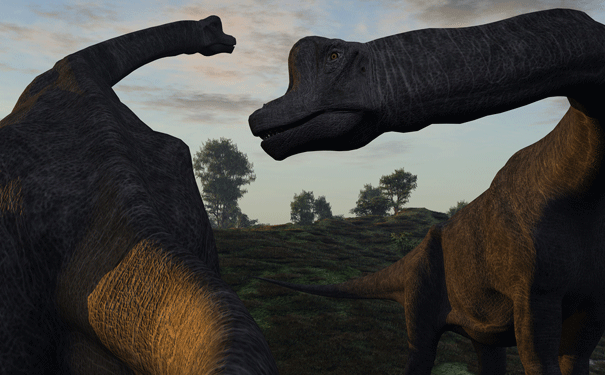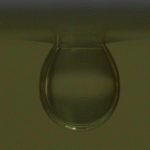
Brachiosaurus, one of the dinosaurs that had its temperature taken, lived during the Jurassic period. Image: Shutterstock.
They may have been extinct for 65 million years, but scientists have found a way to take their temperatures.
How fast could dinosaurs really move? It all depends on their body temperature- the subject of some debate since they were first unearthed in the mid-19th century. Early palaeontologists suggested that they were cold-blooded, like modern reptiles, but more recent research suggests that they required warmer, regulated body temperatures.
A team of researchers, led by the California Institute of Technology (Caltech), has developed a method to measure their temperature posthumously, using the isotopic concentrations in the teeth of sauropods.
The results, to be published in the June 23 issue of Science Express, suggest that dinosaurs had a similar body temperature to modern mammals. Lead author Robert Eagle, Caltech, described the process in the press release as “like being able to stick a thermometer in an animal that has been extinct for 150 million years.”
The researchers analysed 11 teeth from Brachiosaurus brancai and Camarasaurus, by comparing the isotopic concentrations of carbon-13 and oxygen-18 in the resistant parts of the tooth with dentin and fossil bones from related animals. The tooth preserved the physiological temperatures of its former owner- the lower the temperature, the more carbon-13 and oxygen-18 tend to bond in bioapatite (a mineral found in bones and teeth).
The Brachiosaurus’ body temperature was approximately 38.2 degrees Celsius, while the Camarasaurus had a temperature of about 35.7 degrees Celsius. This is cooler than that of modern birds, but it’s still warmer than that of a crocodile.
The results might imply that dinosaurs had a warm-blooded metabolism, but their huge size also means that they could retain more heat than a smaller mammal. “If you’re an animal that you can approximate as a sphere of meat the size of a room, you can’t be cold unless you’re dead,” co-author John Eiler explained.
So even if they were cold blooded, like reptiles, they could still have a warm body temperature. The measured temperatures are also lower than the predictions, indicating that dinosaurs might have been gigantotherms and retained body heat through their huge bulk.
To see if dinosaurs were warm-blooded or gigantotherms, the researchers need to take the temperature of other dinosaurs species, particularly smaller or juvenile dinosaurs. Eagle said “Nobody has used this approach to look at dinosaur body temperatures before, so our study provides a completely different angle on the longstanding debate about dinosaur physiology.”






